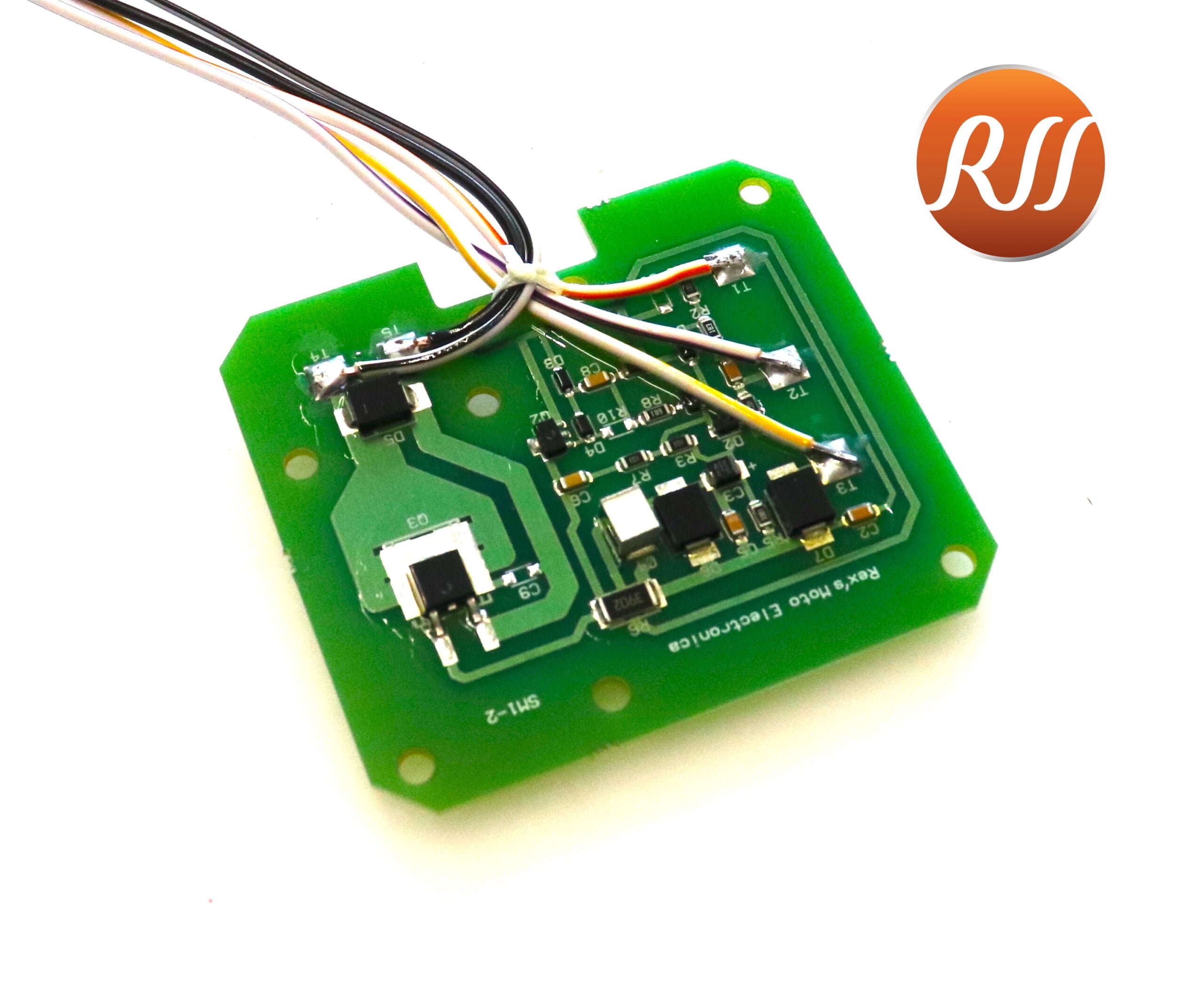Continuing the process, I have encountered 3 challenges that make this upgrade not as easy as it could be.
The first 2 are issues because Rex's kit did not include a plastic connector terminal housing or rubber wire interface seal, both of which are integral to the wires soldered to the old circuit board, and will have to be safely removed in order to be re-used.
Removing the old male terminals from the housing was easy after I made an extractor out of a spare female terminal.

My plan for the wire seal (shown in the photo above where the wires reach the circuit board) is to unsolder the wires that attach to the board, remove the crimped on shrouds that terminate them and pull the wires thru the rubber seal. Hopefully it won't be too difficult to feed the new wires back thru the seal.
The 3rd challenge is how to eliminate the interference that will exist between the new circuit board and the terminal of the component that is mounted in the housing. The old board has a hole in it for the terminal and this hole allows the terminal to protrude above the circuit board without interference. The new board has no such hole and none can be drilled there without breaking printed circuit connections. My current idea for a solution to this is to remove the component from the housing by machining off the 2 rivets that attach the component's mount to the housing. Will have to make sure these holes remain sealed.
This one is only a challenge because one of my objectives is to be able to revert to an old style circuit board in the future, if desirable for some reason. Otherwise, I would just cut the terminal off.
If anyone has any ideas for more clever ways to deal with these issues, please let me know.










